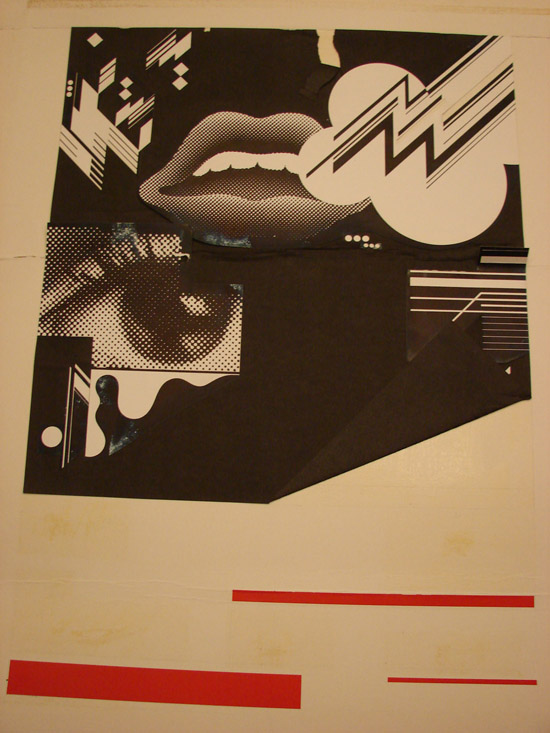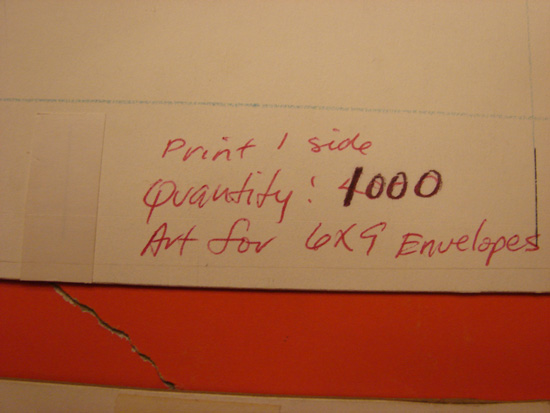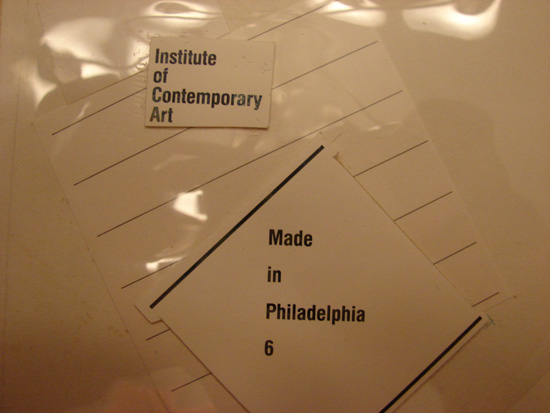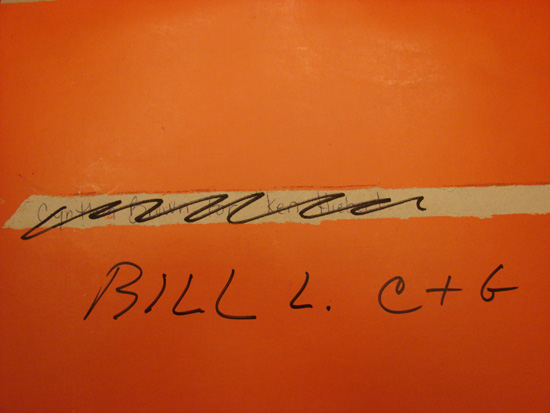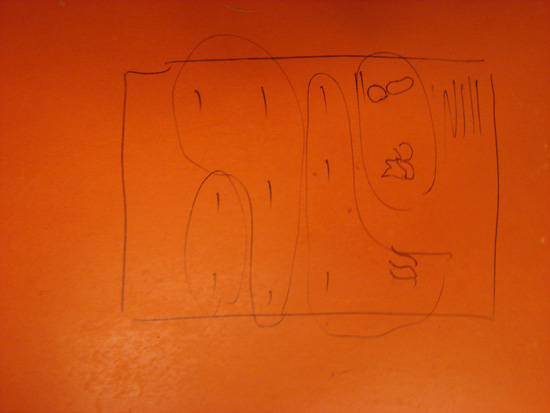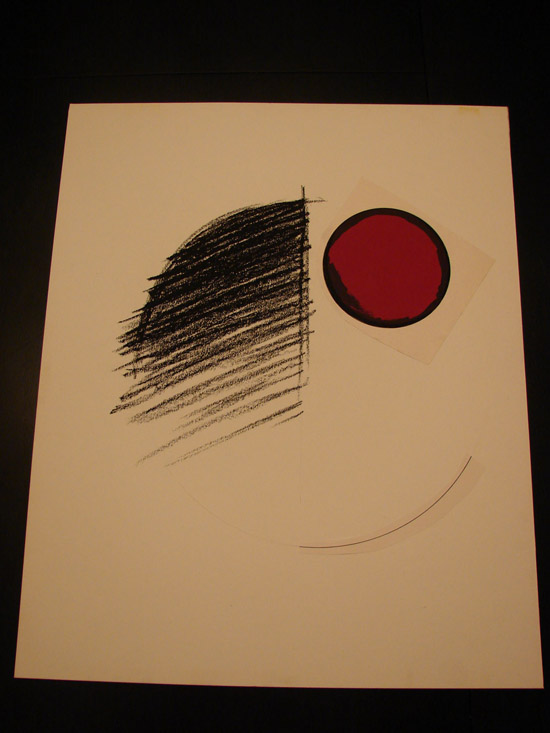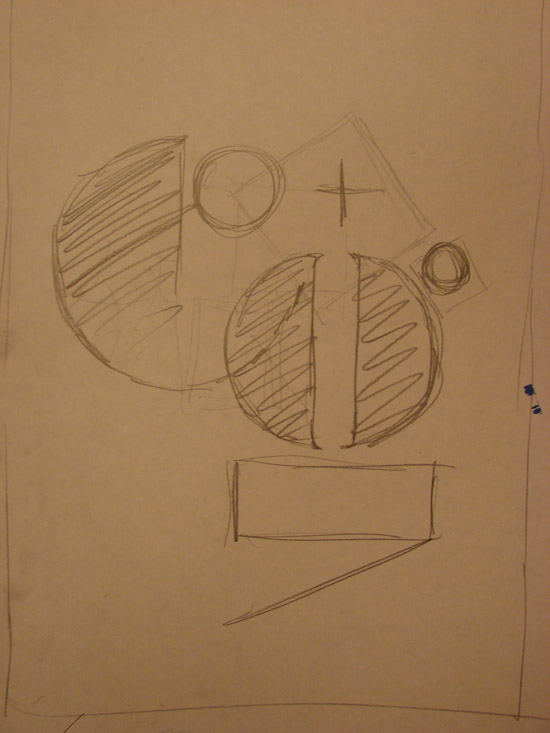Guest post by Dan Newcomer
When I was a senior at The University of the Arts (Philadelphia), our prestigious design program was making a transition to a new level, both figuratively and literally speaking. The department’s faculty had spent the week rooting through about 10-15 years worth of design history in its dusty floors and tack marked walls in exchange for a sleek new floor. A shift in both study and medium.
While I waited for an elevator at the end of the day I noticed a trash can was filled to the brim with old slabs of illustration board, rubylith, and design magazines. The contents of a department’s office who have produced some incredible work. I rooted through the trash shamelessly like there was treasure at the bottom. There was. I picked up two artifacts in particular; both almost foreign.
The first (pictured above) was a creased paste-up of a poster Hans Allemann had created sometime in the early 1980s (1976? -ed.). It was on thick illustration board, now weakened by time and the folds that followed. It had layers of acetate with the red overlays carefully cut and placed perfectly on the collage below. Scrawled on the sides were the thoughts and information clearly necessary at the time; things like quantity, size, etc. the shapes cut and lines drawn with incredible detail and care like a surgeon had created them.
The second (pictured above) was a torn orange folder with similar scribble and thoughts jotted on any surface possible. It was a collection of mock-ups and original art by William Longhauser, a former instructor and now current designer and artist in New York Los Angeles. I never had the opportunity to meet him, however this folder gave me an impression I could already find an appreciation for. It contained multiple mock-ups and sketches for posters and postcards representing past design events in Philadelphia. It was a time capsule to say the least. One portion of a larger poster design caught my eye, it was a tactile, coarse charcoal shape of a half C. The contained energy in this gestural drawing was inspiring. It turns out it was a poster for designed to promote a workshop held by Chermayeff and Geismar, the same year Hans began his studio.
Chris Zelinsky, a former instructor, caught me rooting through the trash can and she immediately insisted I also take an illustration a former student created using gouache and plaka. It was beautiful, it had the fine, pressed, flat quality of a screenprint.
I have held on to these artifacts since. There are a lot of reasons why they remain so valuable to me. They are gifts, you have to understand, a large part of defining who you are is through what inspires you and what you in return create.
Growing out of the academic bubble, I have started to think about my own artifacts; a closet filled with drawings, sketches, school work, sketch books, posters from lectures. They are a chronicle, however important or not important, that is worth saving.
